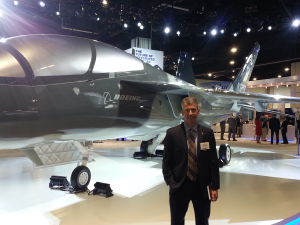Jan Tegler is writer/author from Severna Park, MD. His work appears in a variety of international publications on subjects ranging from military affairs and aviation to business and finance, motorsports, wrist watches and automotive reviews for magazines including National Defense Magazine, Flight Journal, The War Zone, Farm Journal, AgWeb, AutoWeek, Hemispheres and International Watch. He is the author of the book Boeing’s Brilliant Bomber – The B-47 Stratojet from McGraw-Hill and acts as a regular host on two syndicated radio programs, Jazz Straight Ahead and Capital Conversation.
You can contact Jan by sending an email to wingsorb at his full name .com (the same website you are currently viewing; email address is obfuscated to prevent spam).

hi Jan..I’ve been talking with Eric tryingto keep track of Dave Tucker Dates..but want to convey how much I’m enjoying your B-47 book(got it from the library)!!hope to see you at the next show!!
Hi Hap,
Thanks for you kind words. I hope you enjoy “Boeing’s Brilliant Bomber”. I enjoyed writing it and interviewing a wide range of B-47 pilots and engineers, many of whom are sadly no longer with us.
In answer to your first question, I’d say it’s a mixed bag. Up until last March when Covid-19 arrived, commercial aviation manufacturing in the U.S. was doing well with a healthy demand forecast for the next decade. Boeing’s tribulations with the 737 Max had clouded its prospects a bit on the commercial side but like rival Airbus, it had a healthy order book. Now the situation is tough for both makers and the airline business is in a world of hurt. Defense aviation production has been up and down over the last 20 years with a marked decline 12 years ago and a lack of investment/re-capitalization which America’s armed forces have been trying to play catch-up on for the last 3-4 years. Investment has been higher over the recent period but still lags behind what’s needed to appropriately equip the USAF/USN/USA/USMC. And there’s a real need to smartly, cost-effectively bring in new technology. Unfortunately defense appropriations going forward look flat at best. That may cost this country dearly in the long run.
Business and general aviation have been up and down as well with business rebounding over the last four years of economic growth. Interestingly, the long range, large cabin bizjet segment which sailed through the Great Recession of 2008-2015 insulated by the significant wealth of corporate and personal aircraft owners/lessors, is now suffering. Despite the continuing prosperity of many of those in that economic segment, Covid travel restrictions internationally have kept the big bizjets largely grounded. Mid-size business aircraft are seeing some rebound in demand however as domestic business travel is on the rise. General aviation sales and activity have been off in 2020 too but not as much as you might imagine. Personal flying has gained appeal for many who’d rather not mingle with crowds in airports.
So have we ever recovered from 9/11? Yes and no.
On your second question, the Nimitz-gimball events… I don’t dismiss the possibility that there is intelligent life somewhere else in the vast universe. But the publicized events of the early 2000s and particularly those reported with great fervor by the media last year likely have their origin in earthly realms, particularly those associated with EW or electronic warfare. There’s intense work going on here and abroad in that field, most of which is highly classified. I’m pretty confident that much of what has been described – or cynically exaggerated in some cases – stems to a significant degree from electronic warfare testing – not UFOs in the traditional sense of the term.
I hope that adds a little insight. Thanks for being a fan and I hope you enjoy my future work.
Best,
Jan